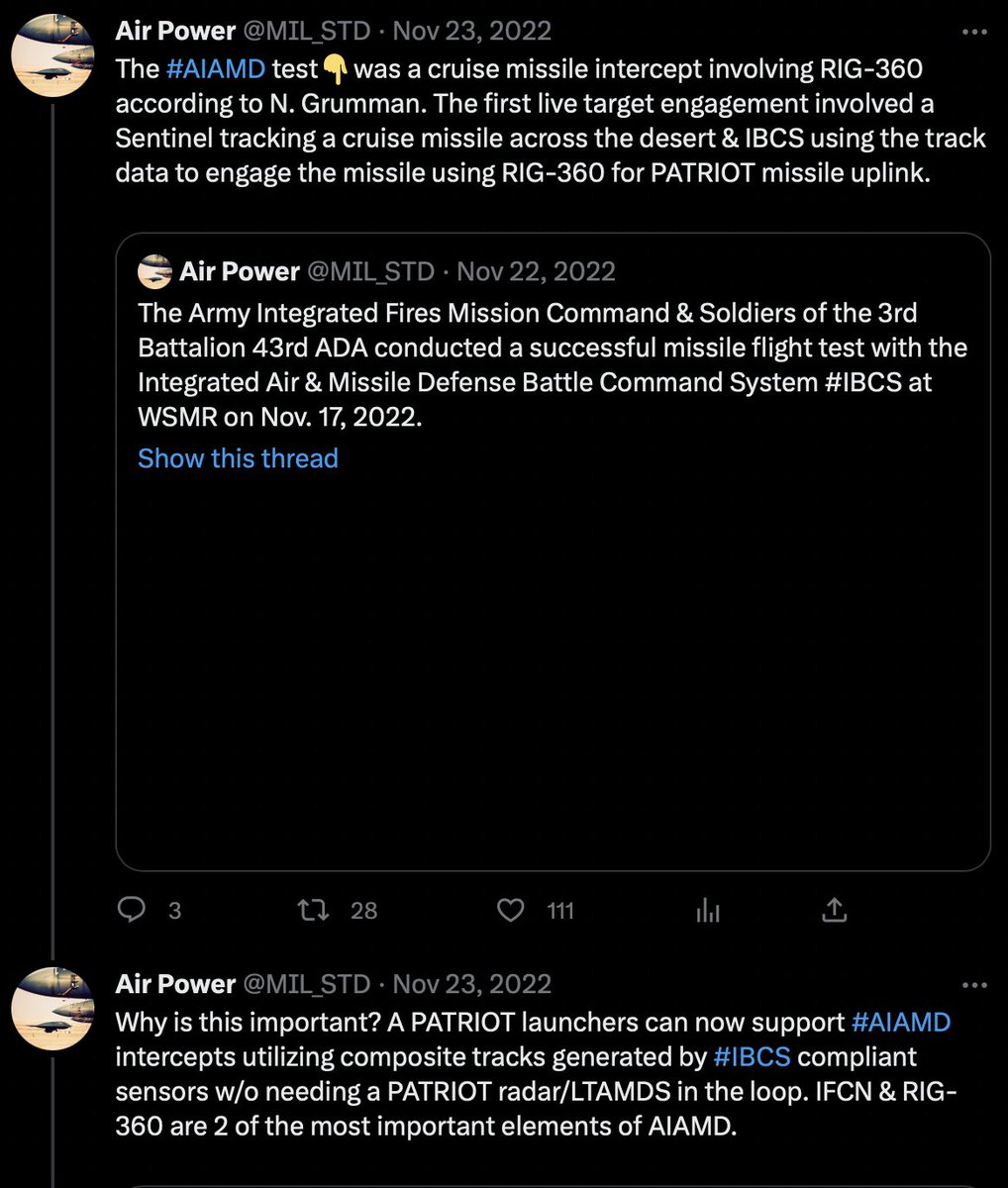This is an important point. While attention is usually focused on a new interceptor, its performance & potential, what often gets overlooked is the incremental enhancements made to the overall system to prepare for the new missile, or to keep pace with the threat. See 📸👇 


https://twitter.com/masao_dahlgren/status/1655013125752594432



👆was published in the mid 1990s just as PATRIOT was preparing to introduce the PAC-3. As included in the paper, at the time, one of the biggest gains was the ability to emplace launchers up to 30 km from the RS. The Army's IAMD-BCS #IBCS extends that to 150 km via IFCN relays.
Wish I could share some of my past threads on this capability. Here's a snippet of what this capability (IBCS / IFCN relays) does to Army's Air and Missile Defense capability. A-IAMD is essentially fully replacing PATRIOT. I'll post more below. 

• • •
Missing some Tweet in this thread? You can try to
force a refresh















